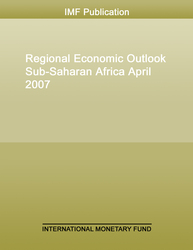
Regional Economic Outlook, Middle East and Central Asia, October 2023: Building Resilience and Fostering Sustainable Growth
| Arabic | |||
| English | |||
| French | |||
| Russian |
Banks and Banking , Exports and Imports , Finance , Inflation , Labor , Economics- Macroeconomics , Money and Monetary Policy , International - Economics , growth , inflation , public debt , external financing , commodity prices , structural reforms , investment , labor productivity , financial stability , stress testing , governance reform , GCC country , credit market reform , government effectiveness , reform package , Policy space , Emerging and frontier financial markets , Credit , Labor force participation , Middle East and Central Asia , Central Asia and the Caucasus , Middle East , North Africa , oil exporter , IMF staff calculation , CCA bank , sovereign-bank nexus , Fiscal stance , Current account balance , Commercial banks , Oil exports , Global



